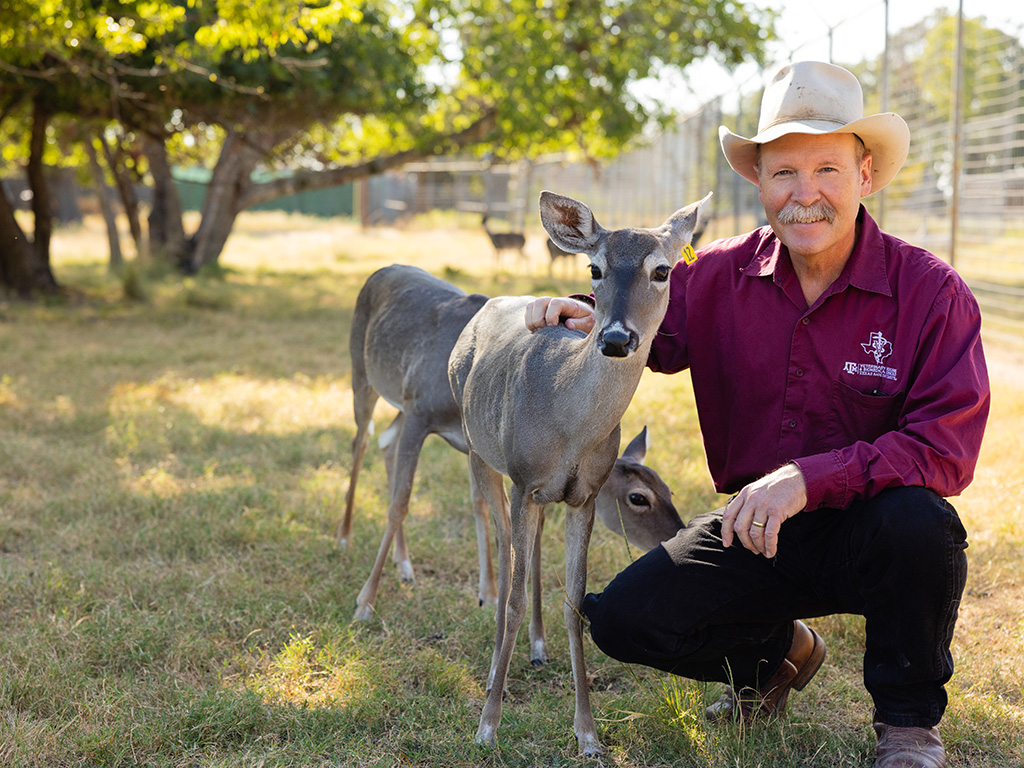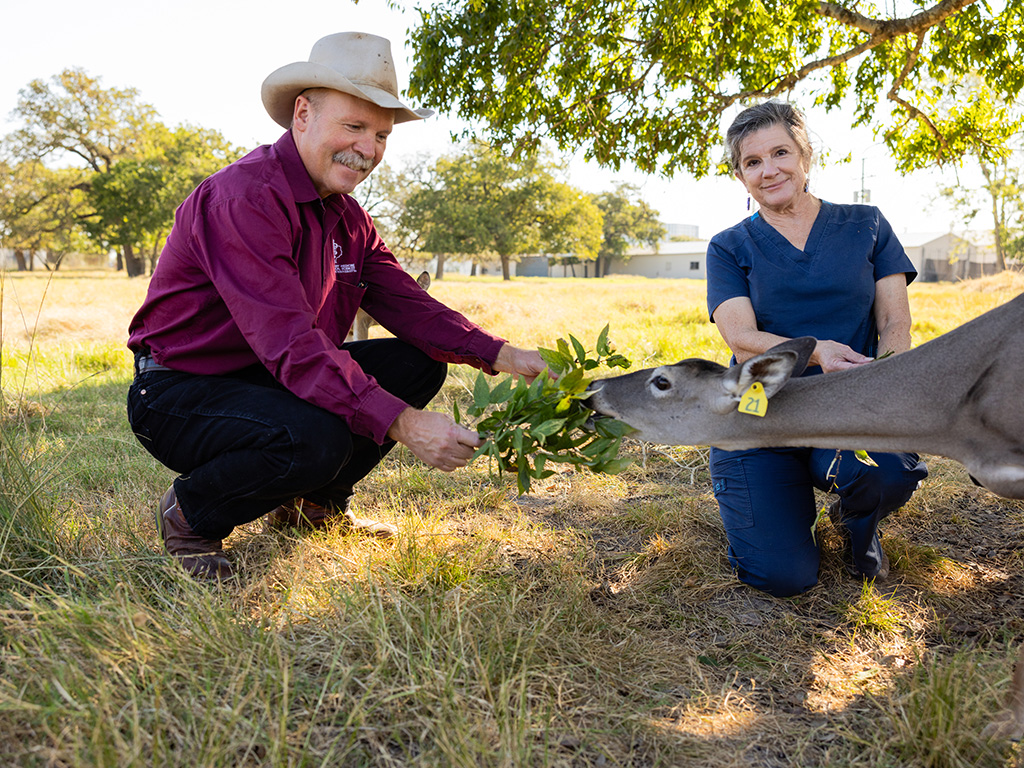Texas A&M Researchers See Success In First Tests Of Oral Anthrax Vaccine In White-Tailed Deer
Story by Courtney Price, College of Veterinary Medicine & Biomedical Sciences
These tests bring the researchers one step closer to an anthrax vaccine for wild deer that aims to stop the disease’s spread throughout the state and, potentially, beyond.

Researchers at the Texas A&M College of Veterinary Medicine and Biomedical Sciences (VMBS) are closer to developing an oral vaccine for anthrax thanks to a recent study proving that their vaccine generates an immune response in white-tailed deer.
Having an oral vaccine is crucial for combatting anthrax infections in wild animals because the alternative — capturing every single animal and administering an injection vaccine — is practically impossible.
“All mammals are susceptible to anthrax to some degree or another,” said Dr. Walt Cook, a clinical professor in the VMBS’ Department of Veterinary Pathobiology (VTPB). “Ranchers who live in areas that are prone to having anthrax are able to give vaccinations to their herds as part of their routine preventative medical care, but that’s impossible to do with wild animals.”
Inoculating wild deer populations against anthrax is important because they contribute to outbreaks of this deadly bacteria.
“When an animal infected with anthrax dies, exposure to oxygen causes the anthrax bacteria to release spores as the carcass decomposes,” Cook explained.
The anthrax spores can then infect another animal that breathes in bits of soil, eats contaminated plants, or drinks contaminated water.
“In the right conditions, those spores can remain active in the soil for decades or even hundreds of years,” Cook said. “Once it’s in the soil, it’s very difficult to remove, so controlling anthrax spore formation is essential.”
The ultimate aim of the project is to create an oral vaccine that can be placed in food baits in areas where anthrax is a problem, like the Edwards Plateau in Central Texas. In 2019, the region saw a spike in anthrax-related deaths that may have claimed the lives of up to 10,000 animals in just a few months.
“Anthrax is almost always fatal,” Cook said. “Having a vaccine tailor-made for wildlife will be a big step toward containing the spread of the bacteria.”

Making An Oral Vaccine
Turning a vaccine meant to be administered through the skin into an oral treatment isn’t a simple process.
The problem is that anthrax spores don’t last long enough in the gastrointestinal tract to create an immune response without help, according to Dr. Jamie Benn Felix, an assistant professor at Texas A&M University-Kingsville’s Caesar Kleberg Wildlife Research Institute.
As a postdoctoral research associate at Texas A&M University’s Cook Wildlife Lab, Benn Felix was able to create a new formula for the oral vaccine using microencapsulation, which uses a protective membrane to slowly release bacteria at a rate that will generate an immune response.
Her work was made possible through the discoveries of another team member, VTPB professor Dr. Allison Rice-Ficht, who developed the encapsulation technique that protects the brucellosis vaccine from stomach acid.
“Thanks to our team’s hard work, we were finally able to test the new oral vaccine and our results show that it successfully generated an immune response. That means the encapsulation technique works,” Cook said.
The next step for the researchers is testing the best way to administer the vaccine to wild animals through food baits.
“We’re very grateful to our funding partners at the Centers for Disease Control and Prevention, the American Association of Zoo Veterinarians, and the Second Ark Foundation of the Exotic Wildlife Association for supporting this important research,” Cook said.
“We would also like to thank Dr. Alice Blue-McLendon, a clinical associate professor in the VMBS’ Department of Veterinary Physiology & Pharmacology, for her assistance and for allowing us to include deer at the Winnie Carter Wildlife Center in our study,” he said.
###
For more information about the Texas A&M College of Veterinary Medicine & Biomedical Sciences, please visit our website at vetmed.tamu.edu or join us on Facebook, Instagram, and Twitter.
Contact Information: Jennifer Gauntt, Director of VMBS Communications, Texas A&M College of Veterinary Medicine & Biomedical Sciences, jgauntt@cvm.tamu.edu, 979-862-4216


